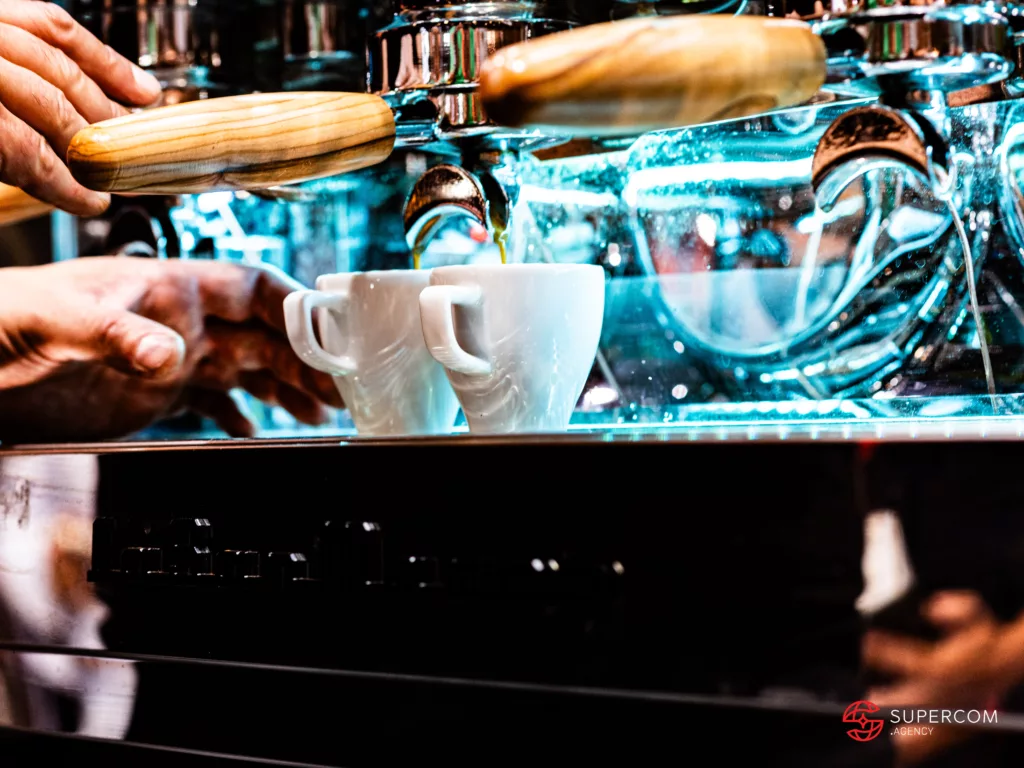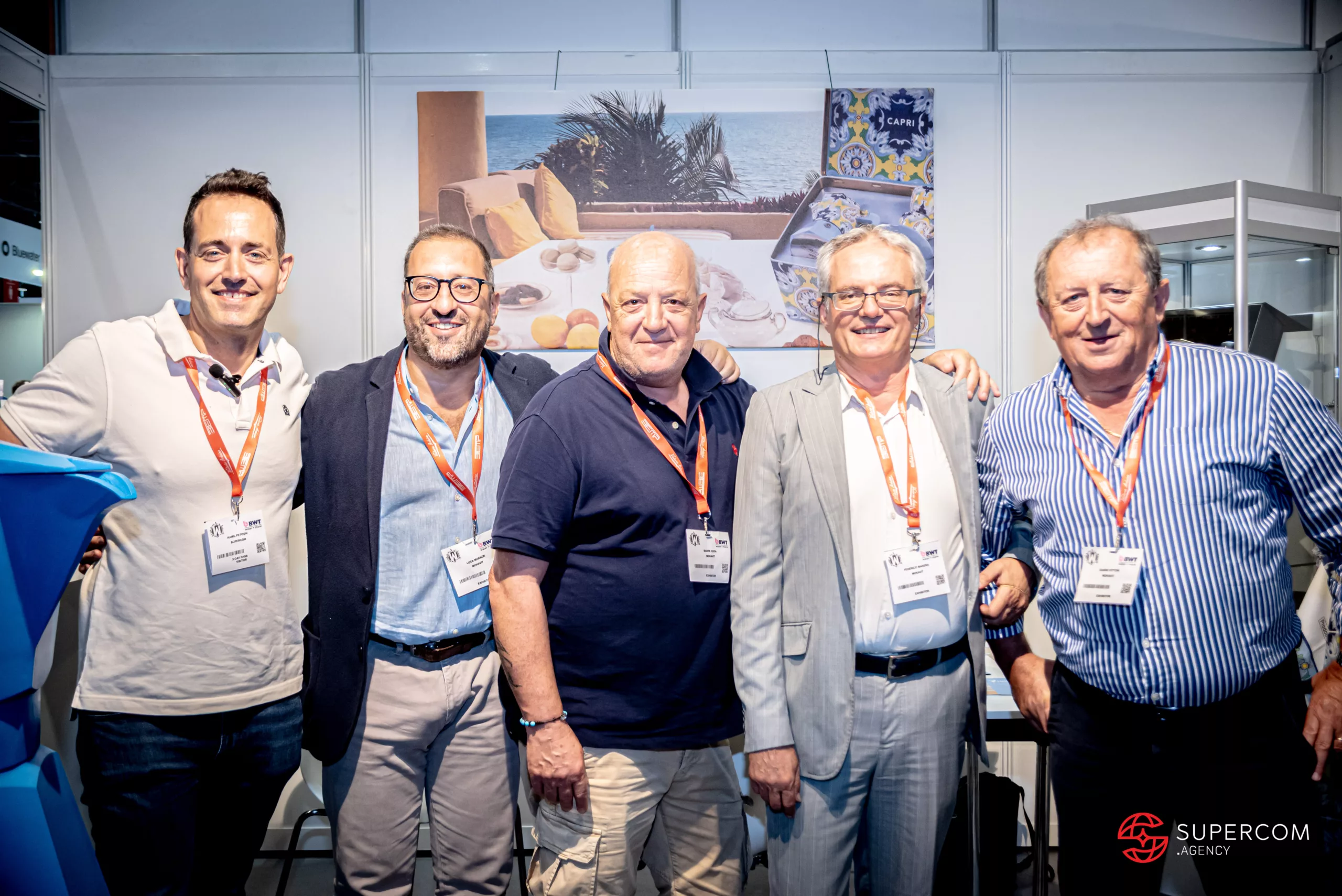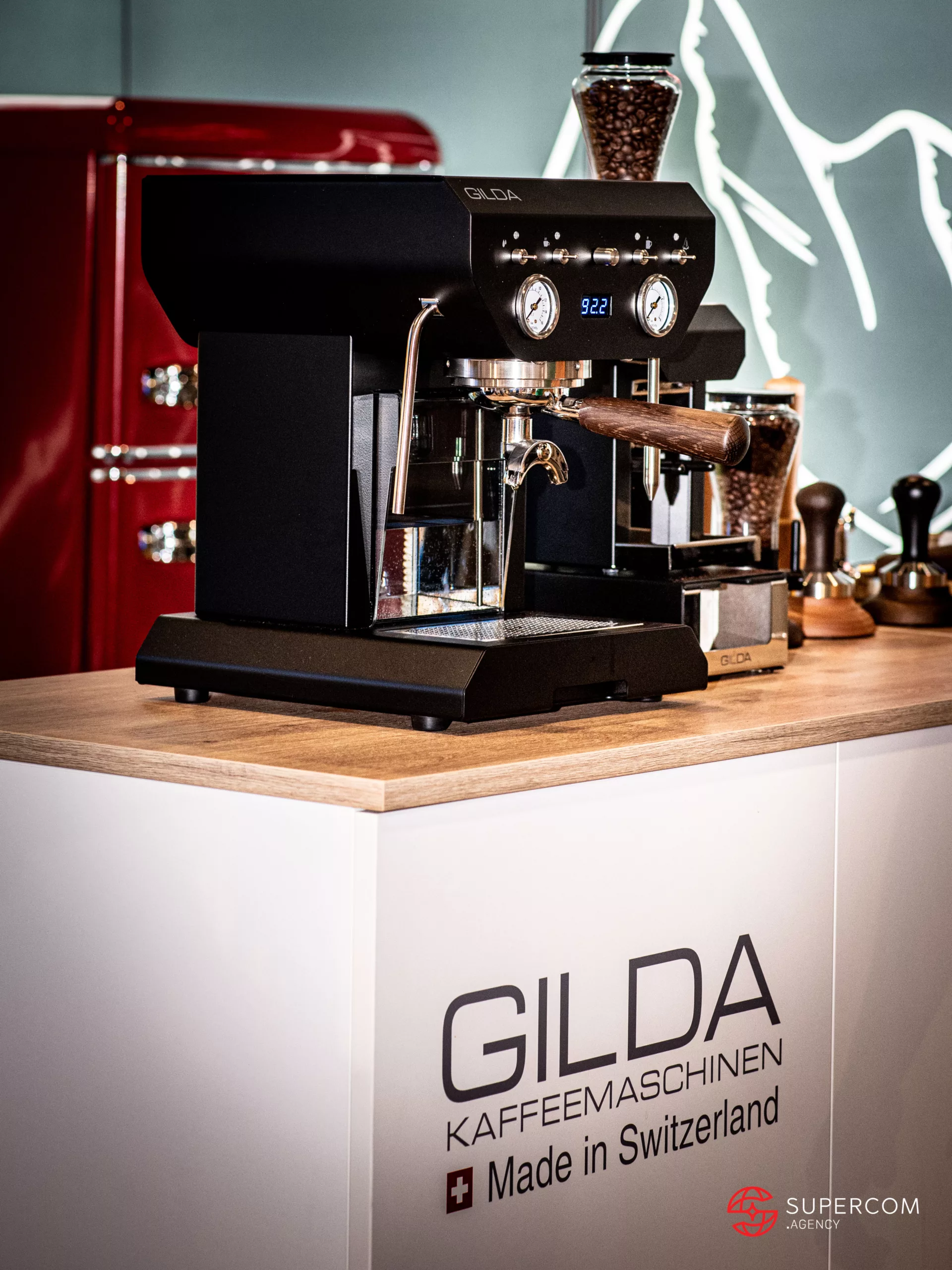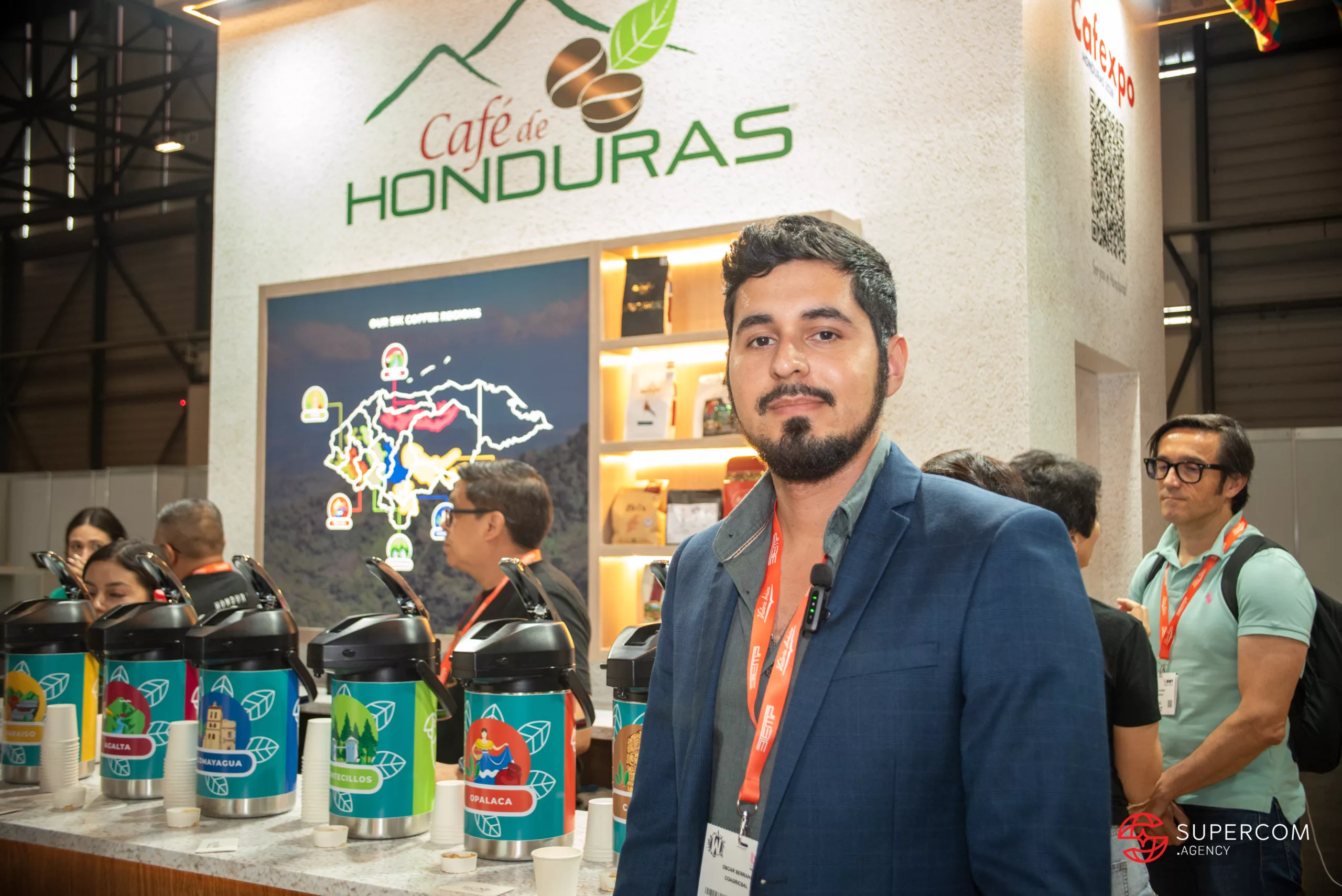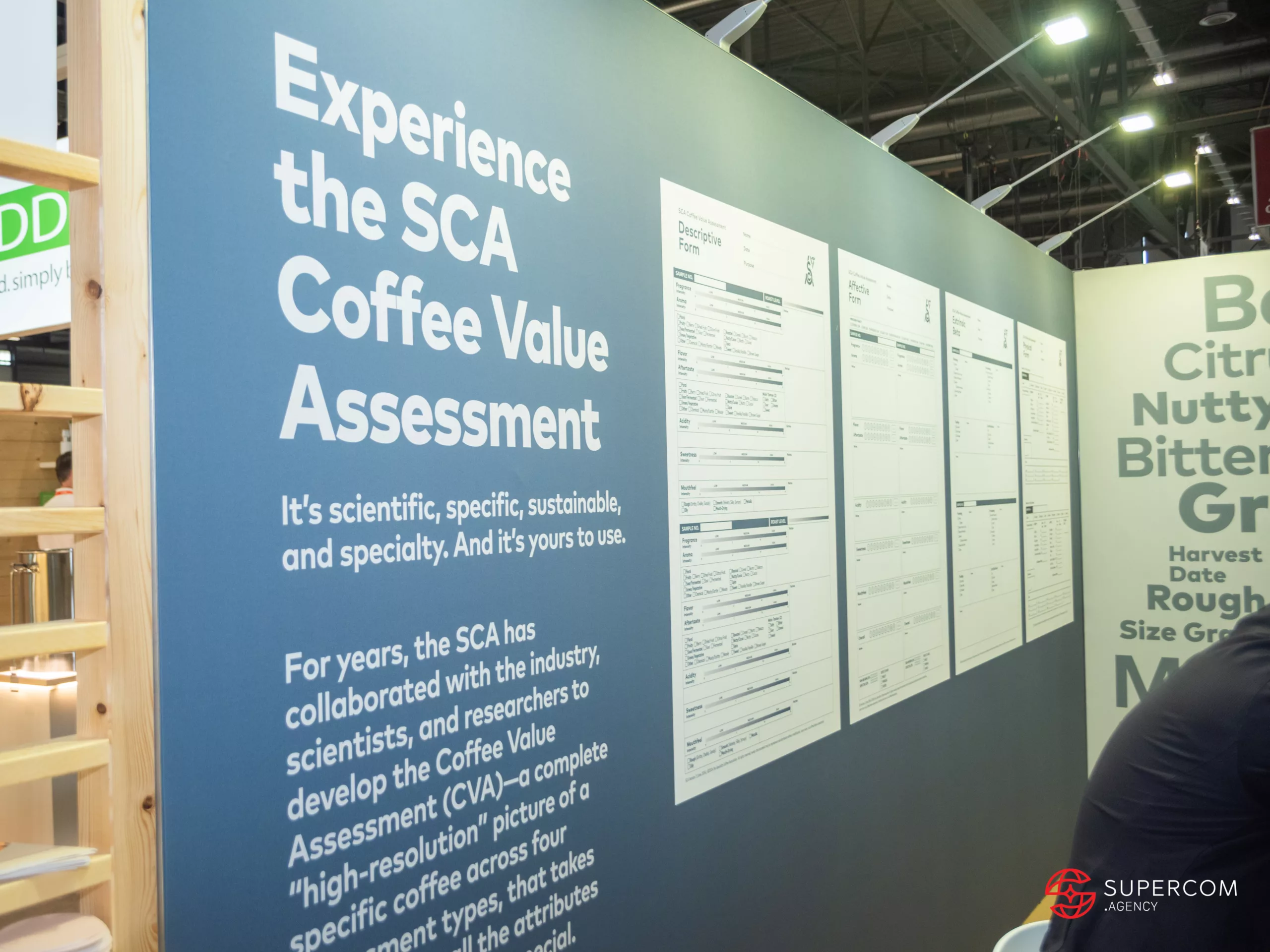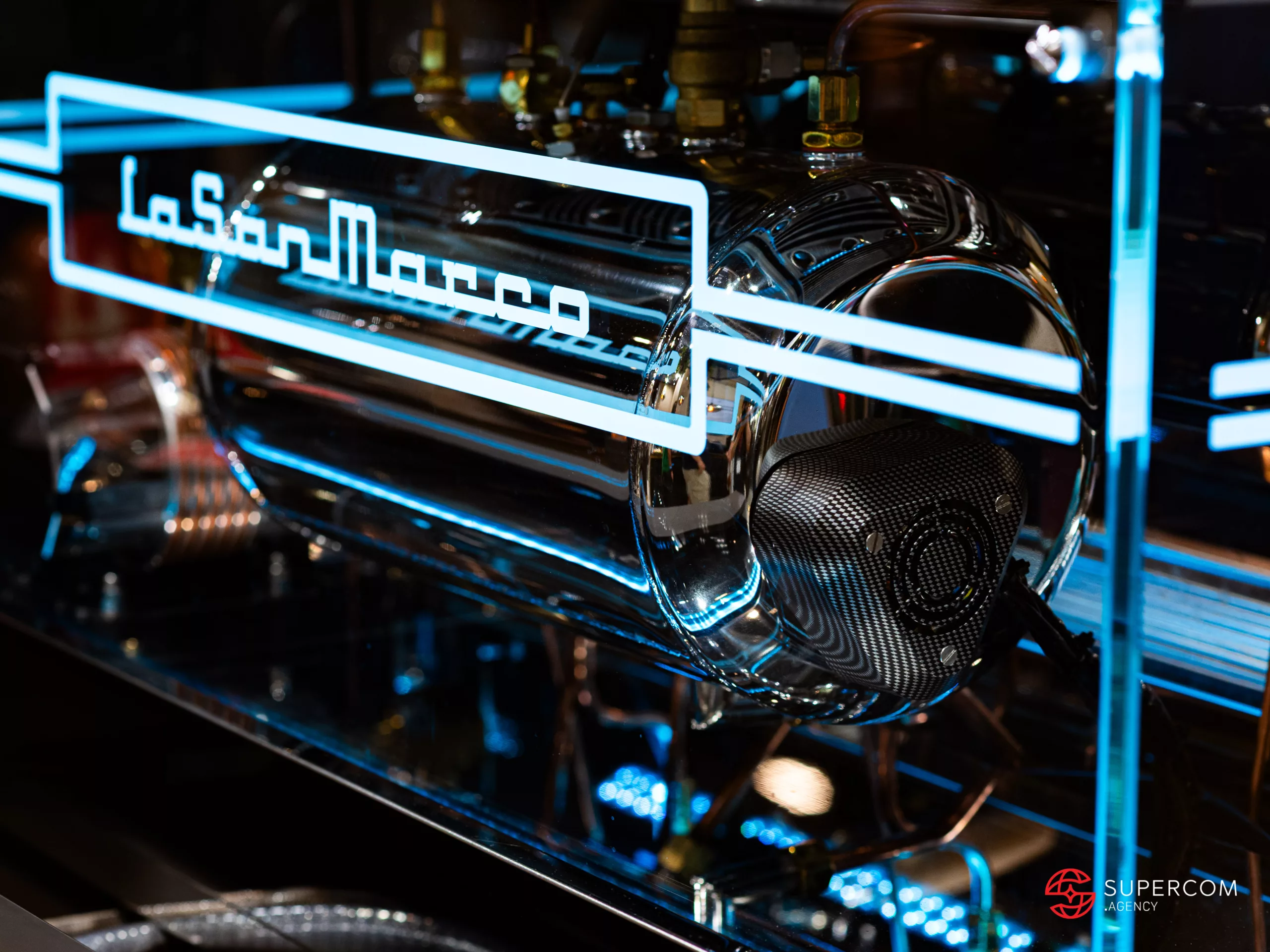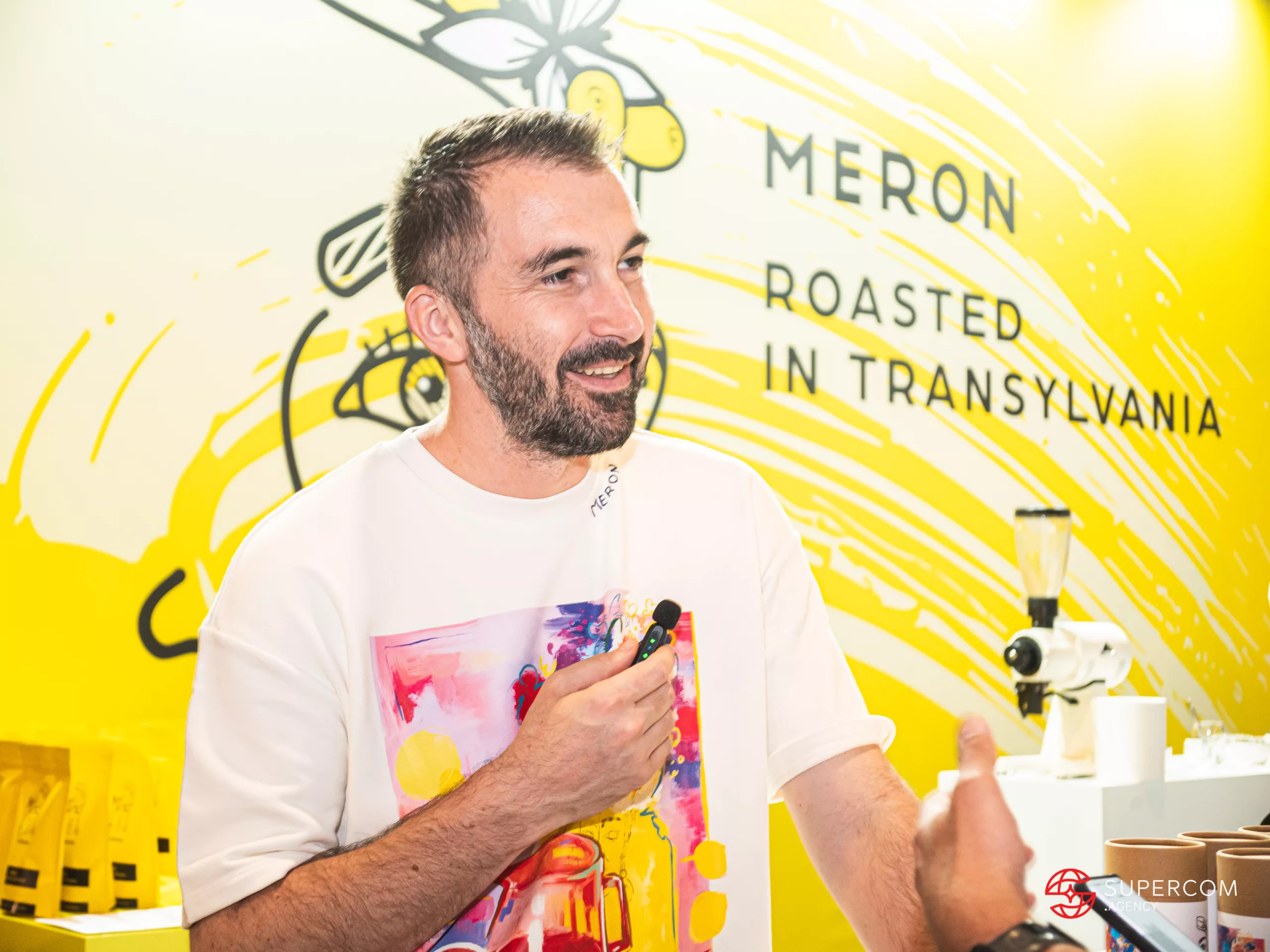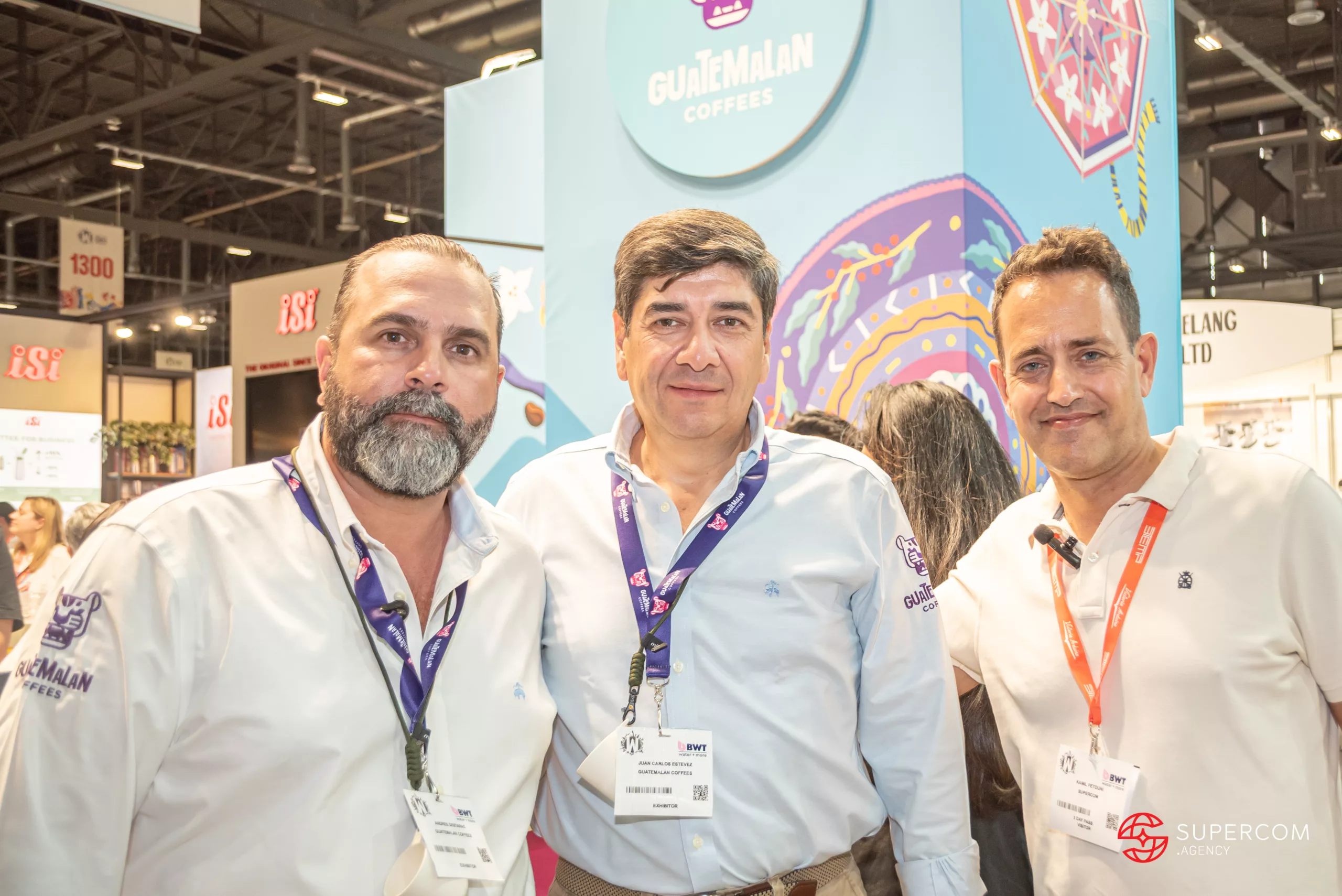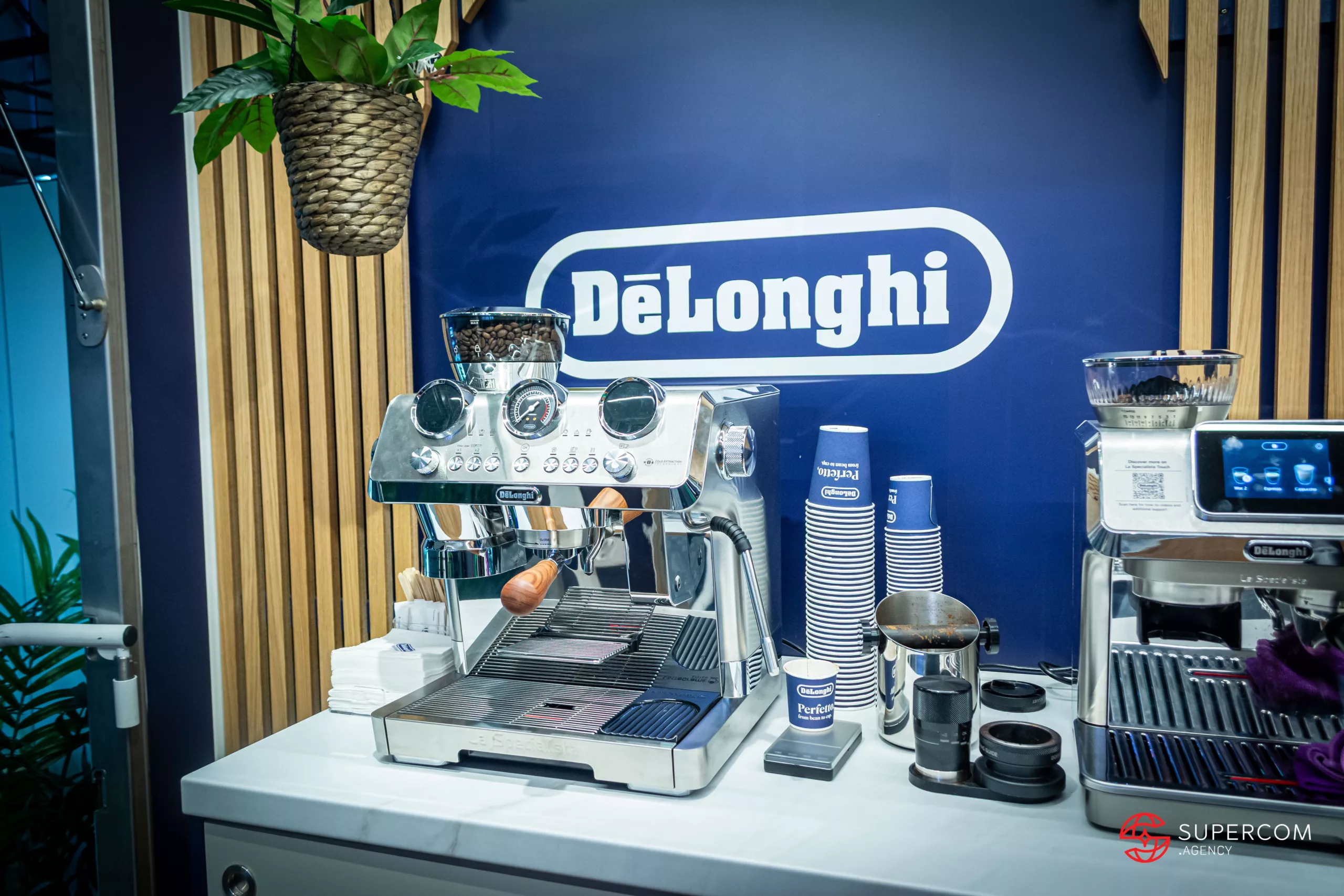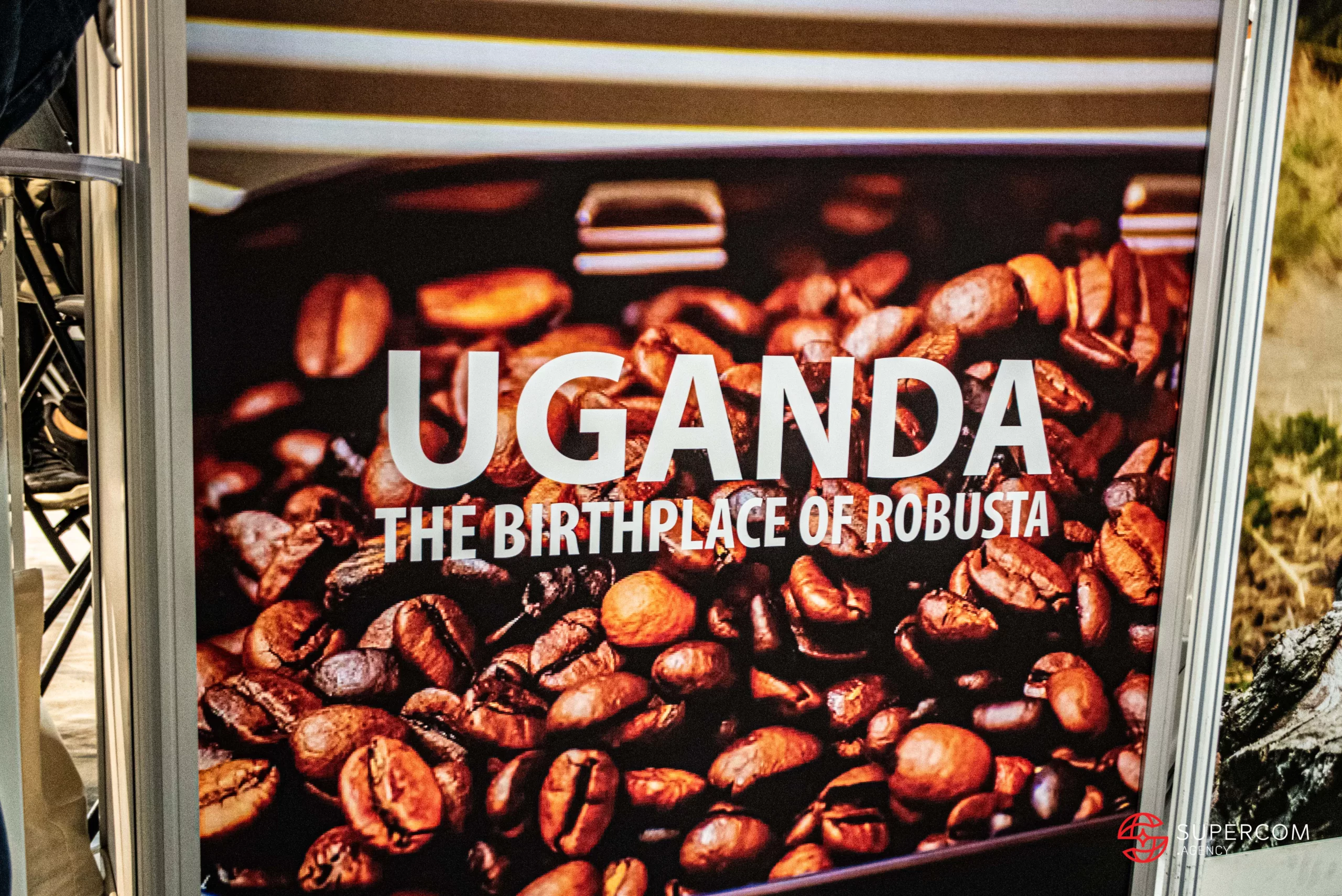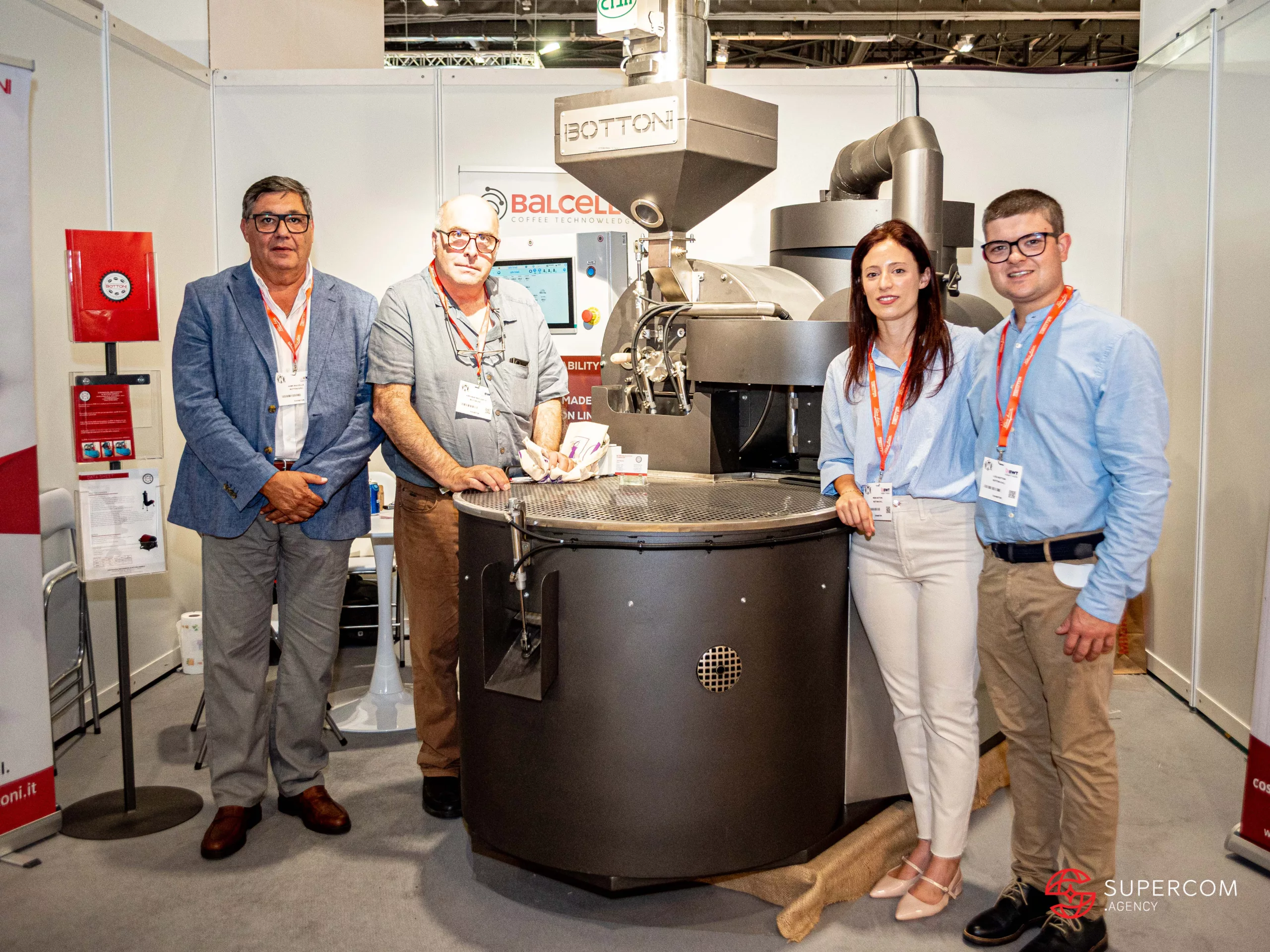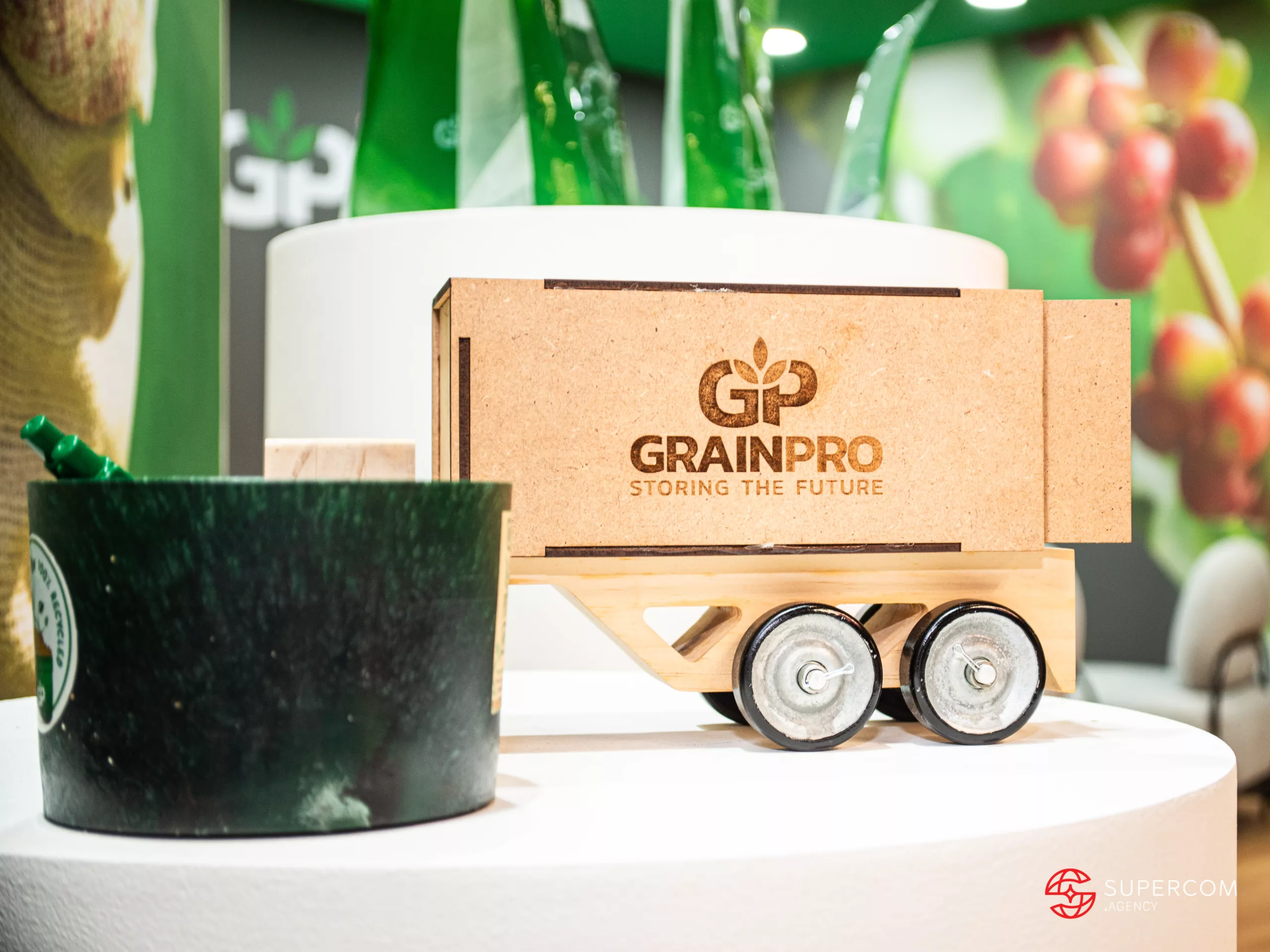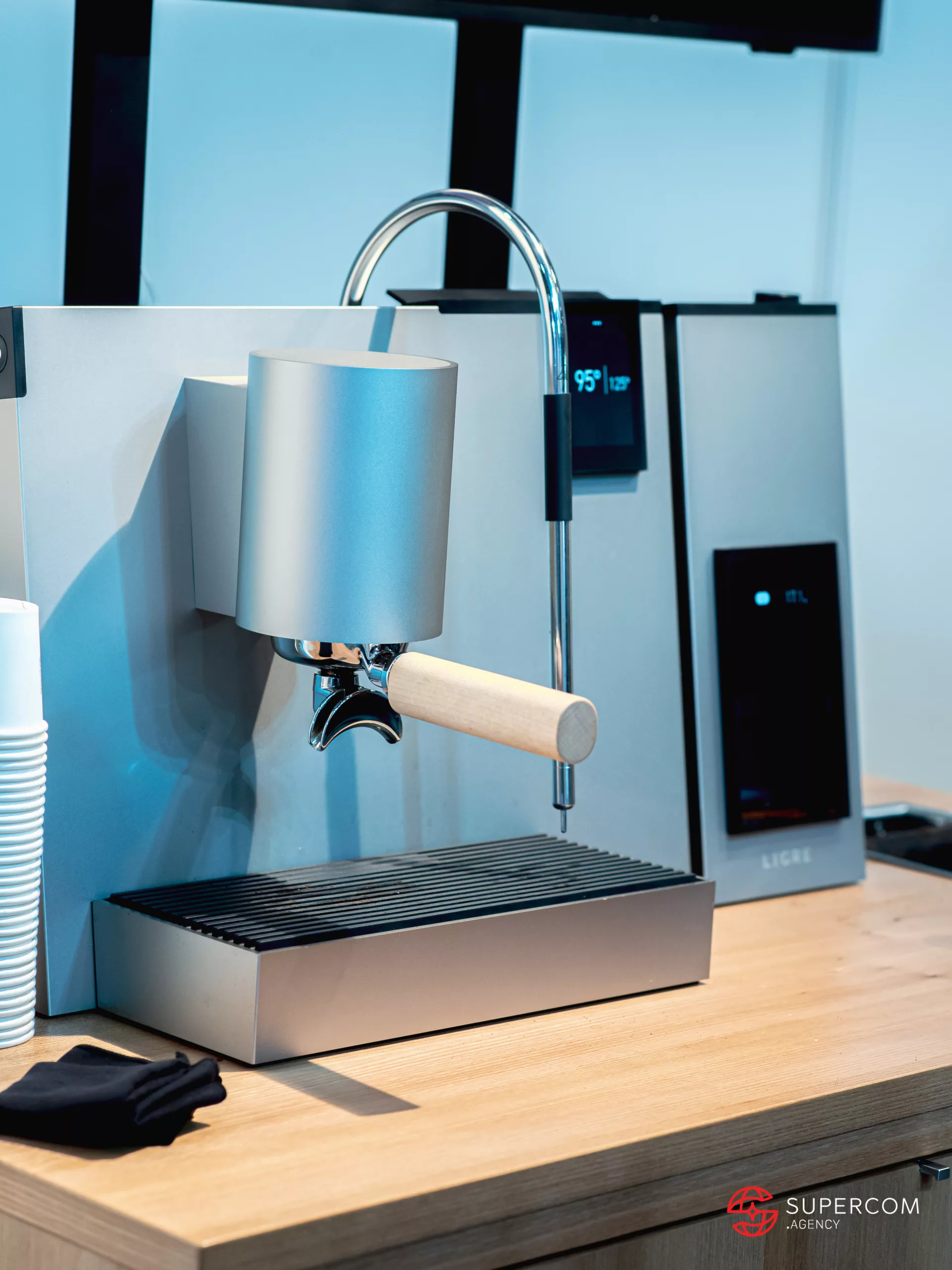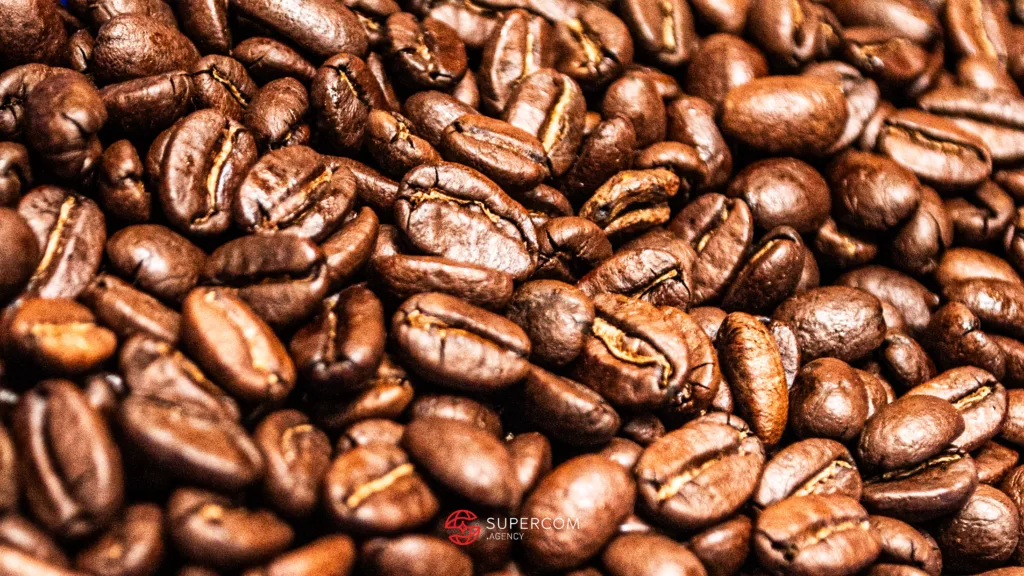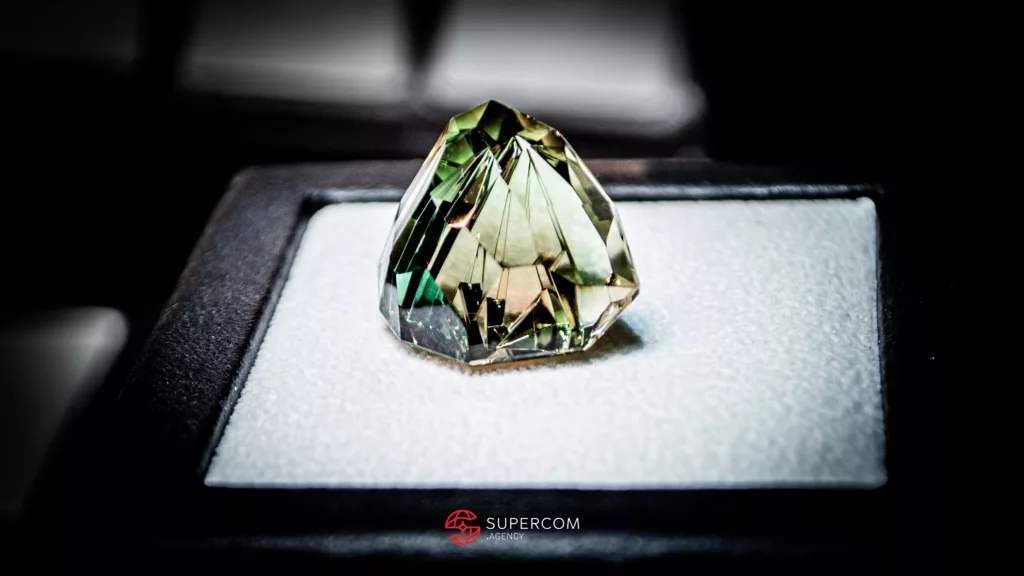Immersion in World Of Coffee Geneva 2025 – The Interview Series – Part 2.
After a packed first day exploring the buzzing halls of World of Coffee Geneva 2025, we returned for Part 2 of our deep dive into the specialty coffee universe. Held each year in a new European city, World of Coffee brings together passionate coffee professionals from across the globe and Geneva offered the perfect stage. Between the intense summer heat and the rich aroma of freshly brewed espresso, the atmosphere was nothing short of immersive.
Following the trail of specialty coffee, we continued to meet innovators, roasters, engineers, and sustainability champions who are redefining what coffee can be. From cutting-edge espresso machines to origin-focused cooperatives, each conversation added a new layer to our understanding of the coffee value chain.
In Part 2, we share interviews and insights from:
Mokavit, Gilda Coffee Machines, Honduras Coffee / IHCAFE, Specialty Coffee Association, La San Marco (Part of SEB Group), Meron Roastery, Guatemalan Coffees, De’Longhi Switzerland AG, Uganda Coffee, Bottoni Impianti, GrainPro, and Ligre.
Their stories, spanning education, equipment, origin, and innovation, showcase the diversity and depth of the global coffee movement. Let’s continue the journey.
MOKAVIT
Federico Manera – Mokavit – A Moka Masterpiece from Italy
At World of Coffee 2025 in Geneva, among the many espresso machines and specialty roasters, stood a moka pot that caught our eye – elegant, classic, and proudly Italian. That pot came from Mokavit, a young but deeply rooted brand based in Val d’Ossola, Northwest Italy. Founded just a few years ago by seasoned experts in Italian coffee hardware, Mokavit is one of the very few brands still producing moka pots entirely in Italy. With a commitment to quality, local manufacturing, and timeless design, Mokavit is bringing the art of stovetop brewing back into focus – one cup at a time.
We sat down with Federico Manera, Sales Manager of Mokavit, to learn more.
Federico, hello, pleased to meet you again.
Right, again! We love telling stories.
Tell me a bit about your brand – where in Italy you’re from, how Mokavit was created, and the different models you offer.
Quite frankly – and I challenge anyone to say otherwise – we are the only moka coffee maker still fully made in Italy. Yes, the moka was invented in Italy, but nowadays, most production has moved abroad. We decided to stay. It’s not easy – the moka doesn’t come cheap, and there’s a lot of sacrifice behind it – but it pays off. We’re proud to keep this tradition alive.
Moka, for us, is about people, passion, and a century-old legacy. The Mokavit brand itself is quite recent – a couple of years old – but the people behind it have been producing moka pots for major, well-known brands for decades. When those brands moved production to countries like China, our founder decided not to give up. He launched Mokavit instead, and today, we’re selling in Italy, across Europe, the U.S., and beyond.
So everything is done in-house?
Exactly. From design to production – we make them one by one in our own factory. We’re based in Val d’Ossola, Northwest Italy, close to the Swiss border. It’s an area famous for cookware production – brands like Lagostina also come from there.
And I see you have an induction model too?
Yes. Today, many moka pots don’t work with induction stoves, but ours are made with a special base that works on all heat sources: induction, gas, ceramic, electric. We actually only produce induction-compatible models now.
I also saw some special editions on your stand.
Yes! We customize moka pots for clients. One of our partners is Chicco d’Oro, a Swiss brand. We created white-label moka pots for them, including custom packaging. We also produced special editions for events like the Giro d’Italia, La Vuelta, and even for the Catholic Jubilee 2025 in Rome. We struck an agreement with the Vatican for that one. It’s a limited-edition collector’s item.
And yes – we even made one for Napoli Football Club. I’m not a Napoli fan myself (just joking!), but it’s a fun collaboration.
What sizes do you offer?
Mostly, we do three-cup moka pots. In Italy, that makes about four espresso-sized coffees. We also offer six- and nine-cup versions, but three is the most popular. In the U.S., one moka might be considered a single serving but Italian coffee is strong! Mocha really wakes you up.
Do you produce coffee too, or just the moka pots?
Just the moka. We don’t deal with coffee beans. We focus entirely on making the best moka pots – that’s our expertise.
So how did you find the trade show?
Great. We had a lot of good contacts. I’ve done World of Coffee before with other companies, and every year, in every city, it delivers. Geneva was no exception. Next year in Brussels – we’ll be there too.
Thank you, Federico. It was a pleasure
Thank you, always a pleasure.
Gilda
Swiss Precision in Every Cup: Interview with Bruno Trepp, Owner of GILDA Kaffeemaschinen AG
Based in Lucerne, GILDA Kaffeemaschinen AG is a Swiss company dedicated to crafting precision espresso equipment. With over 13 years of expertise, GILDA takes a focused approach-producing just two core machines: a compact, high-performance espresso machine and a matching grinder featuring a patented volumetric dosing system.
This minimalist product range embodies GILDA’s core philosophy: master a few things to perfection. Entirely manufactured in Switzerland, both machines reflect the country’s tradition of exceptional craftsmanship, engineering excellence, and refined design.
At the World of Coffee, we met with owner Bruno Trepp, who describes GILDA as a “start-up with 13 years of experience.” The company delivers a fully integrated system built for professionals-combining efficiency, elegance, and Swiss-made reliability in every detail.
Bruno, nice to meet you. You’re the owner of GILDA Kaffeemaschinen – can you introduce your brand?
Yes, absolutely. GILDA has been around for 13 years. We often say we’re a start-up with 13 years of experience. Everything is made here in Switzerland. The machine you see here was originally developed 13 years ago, and we’ve stayed true to our core values: Swiss precision, compact design, and energy efficiency.
Can you walk us through the machine’s special features?
Sure. Our espresso machine uses a boiler system, but with minimal water inside – that’s what makes it so quick to heat up. The steam function, for example, is ready in just 45 seconds. And we’ve engineered it so the steam only activates when needed, saving energy. After four minutes of inactivity, it automatically shuts off. The temperature is extremely stable, and because the water tank is removable from the front, it’s perfect for tight kitchen configurations. It holds 2.6 liters – quite generous for its size.
And the grinder? You mentioned it has some patented elements.
Yes. Our grinder – we call it simply “die Mühle” – has a patented volumetric dosing system. Many grinders just rely on timers. Ours uses volume, which ensures much better repeatability. You just rotate the bean container to select the volume, open a dosing chamber, and the exact amount falls in. You grind by pressing and can stop anytime, resume, or adjust. It’s very barista-friendly and fits perfectly with our integrated knock box and tamping drawer below.
Can people buy the machines directly from you or online?
No, and that’s intentional. We’re a B2B-only brand. Our machines are sold through resellers and specialty retailers who are trained by us. They introduce the product to the end customers, offer barista training and after-sales service. For us, that human touch and expertise is crucial – you don’t just buy a machine, you get a professional experience.
Are you only selling in Switzerland at the moment?
Up until now, yes – 90% of our customers are Swiss. But being at World of Coffee has opened new doors. We’re looking to expand internationally and find the right distribution partners abroad. It’s exciting to hear the reactions – people from outside Switzerland really notice the quality: the machining, the finish, the way the parts fit perfectly with no gaps. That’s what Swiss craftsmanship means.
Final thoughts?
In the end, it’s all about consistency, quality, and a little bit of magic. A good espresso needs good water, a good machine with stable temperatures, and a grinder that performs consistently. That’s what we aim to deliver – a full system, from grind to cup, built with care.
Thank you Bruno!
Thank you too.
Honduras Coffee
Honduras: A Land of Diverse Coffees and Organic Commitment. Interview with Oscar Serrano, Coagricsal Cooperative
Honduras is one of Central America’s largest coffee producers and an increasingly important player in the global specialty coffee market. Its rich volcanic soil, high altitudes, and diverse microclimates allow the cultivation of a wide range of Arabica varieties such as Bourbon, Typica, Catuai, Pacas, and IHCAFE 90. From the highlands of Copán to the tropical zones of Olancho and El Paraíso, Honduran coffees are known for their balance, complexity, and growing reputation in international competitions.
We had a discussion with Oscar Serrano, representative of Coagricsal, a cooperative that also partners with the CoAlízate network, to learn more about their offerings, certifications, and Honduras’ role in the new sustainability landscape.
Oscar, nice to meet you. Can you introduce yourself and what you’re presenting here?
Of course, it’s a pleasure. My name is Oscar, I’m from the cooperative Coagricsal, and we’re here at the Honduras pavilion offering coffee preserved and produced by our cooperative and partner farms. We’re part of the CoAlízate initiative as well, which brings together cooperatives with strong commitments to organic and sustainable farming.
Your stand mentions “certificados.” Can you explain what this means for your coffees?
Yes. “Certificados” refers to our certified coffees-most of what we offer is organic, Fairtrade, and in some cases Rainforest Alliance certified. This means the coffees are cultivated with strict attention to environmental standards, avoiding chemical inputs and preserving biodiversity.
And what are the advantages of organic coffee for the consumer?
Organic coffee is not just better for the environment, it’s healthier for the final consumer. The plantations grow without synthetic fertilizers or pesticides, and the farming methods help improve soil quality and sustainability. Also, the certifications guarantee that the producers are paid fairly, which has a direct impact on quality and long-term sustainability.
Honduras is now affected by the new European Green Deal and its risk classifications for deforestation. What is the position of Honduras coffee under this regulation?
Yes, we are aware of the European Union’s new classifications-low, medium, and high risk-when it comes to deforestation and traceability. Due to climate change, certain areas in Honduras might be under pressure, but as of now, many of our coffee regions are classified as low-risk. We are actively working on traceability, reforestation, and preserving protected areas to stay compliant. Our systems already allow full traceability from farm to port.
Can you tell us a bit more about the coffee you were showcasing today?
Yes, this particular coffee is from the region of Intibucá, from a farm called Inra Mcnacho. It’s grown near the Kentucky River-altitude around 1,600 meters. It’s a clean cup with notes of caramel, citrus, and floral hints, and it was roasted and profiled recently in Valencia. We’re very proud to bring it here to share with specialty buyers.
Thank you, Oscar. A final word about your goals for this fair?
We’re looking to expand our market, especially among specialty roasters who care about sustainability and transparency. We believe Honduran coffee is reaching a new level-and we want the world to taste that evolution.
Specialty Coffee Association
Understanding Coffee Beyond the Cup: The SCA Value Assessment system. Interview with Laurel Carmichael.
The Specialty Coffee Association (SCA) is a global nonprofit organization dedicated to fostering a worldwide coffee community that supports activity across the value chain-from coffee producers to baristas, traders, roasters, and consumers. It plays a leading role in setting quality standards, promoting education, and publishing research that drives innovation and sustainability in the specialty coffee industry. With events like World of Coffee which SCA organizes, training programs, and publications such as 25 Magazine, the SCA helps coffee professionals around the world connect, learn, and thrive.
At the World of Coffee Geneva, we had the pleasure of meeting Laurel Carmichael, the Publications Manager at SCA and Editor of 25 Magazine. Here’s what she shared about her role and one of the SCA’s latest initiatives: the Coffee Value Assessment.
So hello Laurel, can you present yourself quickly and also explain what SCA is doing?
Yeah, of course. I’m Laurel Carmichael, I’m the Publications Manager at SCA. And here at World of Coffee, I’m working on our activation around the Coffee Value Assessment, or CVA. The SCA itself works to connect and support coffee professionals through research, education, events, and community-building efforts all along the coffee value chain.
Tell us more about the Coffee Value Assessment-what is it exactly?
The Coffee Value Assessment is a framework designed to evaluate coffee in a more holistic way. We look at four key components: the physical attributes of the coffee, the extrinsic qualities (like how it smells and how it looks), the cup quality (flavor, acidity, body), and the perceived value. It’s about both describing and experiencing coffee. What do you taste? What do you enjoy about this coffee? It’s not only about technical scoring but about capturing the full value of a coffee from multiple perspectives.
So it’s not just for professionals, but something everyone can engage with?
Exactly! One of the exciting things about the CVA is that it invites more people into the sensory conversation. Anyone can begin to describe what they’re tasting. For example, if you eat a lot of oranges, you start to recognize orange in a coffee. You train your sensory memory over time. It brings the language of coffee closer to consumers, not just professionals.
How is it being adopted at the producer level?
Like any new system, adoption is a gradual and thoughtful process. But we’ve seen significant steps forward. For instance, we’ve signed memorandums of understanding with producer organizations, like the FNC in Colombia, who will begin to implement the CVA into their national assessment system. That’s a huge milestone. We’re also running training sessions in producing countries like Mexico, and starting in October this year, the CVA will become part of the Evolved Q Grading program. So we’re expecting a much broader adoption very soon.
And what is your intention here at the trade show?
Personally, it’s about connecting with people. I want to meet them where they are-not talk at them, but experience coffee with them. When someone has a cup of coffee in hand, I love helping them describe it, together. It’s about showing how the CVA can be part of everyday coffee enjoyment-not just something you read about or study, but something you practice and live. That’s my goal here.
Thank you so much, Laurel.
Thank you!
La San Marco
The Art of Espresso: A Conversation with Simone Celli at the La San Marco Stand
At the World of Coffee Geneva 2025, visitors were drawn to the elegant La San Marco stand – sleek machines, glass bodies, and the scent of fresh espresso in the air. Among the buzz stood Simone Celli, barista trainer and educator at Espresso Academy in Florence, temporarily donning a new hat: brand ambassador for one of Italy’s most iconic espresso machine manufacturers, La San Marco.
We had a short but intense conversation with Simone, surrounded by the mechanical beauty of the lever-operated espresso machine he was demonstrating live at the booth.
Simone also told us about the courses you could take at the Espresso Academy.
Hello Simone, nice to meet you. Could you tell us a bit about yourself and your role here?
Nice to meet you too, it’s a pleasure. So, I’m Simone, a barista trainer from Italy with the Espresso Academy in Florence. For this event, I’ve joined La San Marco to present one of their latest machines. La San Marco is a historic brand located in the northeast of Italy, between Trieste and Venice, known for producing high-quality espresso machines since 1920.
What kind of machine are you showcasing here today?
This one is a manual lever machine, encased in an eye-catching glass structure. What’s special is that you can see all the internal components-boilers, levers, and valves-working in real time. It’s a multi-boiler system: three boilers for espresso extraction and a fourth one dedicated to steam. Each group head can be set to a different temperature, allowing you to brew different types of coffee at their ideal settings.
That sounds highly customizable. Who is this machine designed for?
It’s designed for expert baristas who are really focused on perfect extraction. The machine is fully manual-no electric pumps. Everything is powered by the strength of the barista, so there’s zero noise from a motor. You pull the lever by hand, and that controls the pressure profile. Holding or releasing the lever changes the pressure, and you can see the profile on a screen as you work. It’s a very hands-on, sensory experience.
It really adds a theatrical element to the barista’s role. Who is the target customer for this machine?
Exactly-it turns making espresso into a performance. The target clients are coffee shops, cafés, and restaurants that want not just quality but also an aesthetic showpiece. This machine adds storytelling to the espresso ritual, drawing the customer in. It’s a piece of art, really.
Where are La San Marco machines mostly sold? Is it mainly Italy and Europe?
Actually, it’s a global brand. Even here at the fair, I’ve met distributors from the US, Canada, Asia, and beyond. I’m not involved in sales myself-I’m the barista-but I can say that La San Marco is definitely well-recognized internationally. It’s one of the oldest espresso machine makers from Italy, and the machines are appreciated worldwide.
What do you think of the World of Coffee event so far?
It’s been intense. I haven’t had much time to explore because I’ve been here at the stand most of the time. But I did take a short walk yesterday and felt this great energy-lots of innovation, lots of people, and great vibes from the coffee community. And I’ve run into many former students from Espresso Academy who came to say hi. It’s always rewarding.
Tell us more about Espresso Academy. You teach there in Florence?
Yes, Espresso Academy is our coffee training center located in the heart of Florence. We offer a wide range of professional courses designed for baristas, roasters, coffee entrepreneurs, and passionate enthusiasts from all over the world. I’ve been teaching there for many years, and it’s always fulfilling to see how our students evolve-some go on to open their own coffee shops, work for major roasters, or even become trainers themselves.
At Espresso Academy, we focus on both theory and practice. Our core programs include the Barista Skills Course, which covers everything from espresso techniques to milk frothing and latte art, as well as the Brewing Course, dedicated to manual methods like V60, Aeropress, and Chemex. For those interested in the business side, we offer a Coffee Shop Management Course, and for future roasters, we run a Coffee Roasting Course where students learn how to profile and evaluate green coffee. We also provide SCA-certified modules and even specialized courses like Sensory Analysis and Latte Art Training.
We noticed La San Marco is now part of the SEB Group. Has that changed anything?
Yes, La San Marco is now under the SEB Group umbrella, which includes brands like WMF. But the machines are still designed and manufactured in the original factory in Italy. The craftsmanship remains the same, even with the backing of a larger group.
Thank you so much, Simone. It was a pleasure. Shall we go see the machine in action now?
Absolutely. Let’s do it. But I’ll need both hands for this one-it’s all in the muscle!
Meron Roastery
Meron: Ten Years of Brewing Connections, Not Just Coffee
Meron is a Romanian specialty coffee company founded in 2015, known for its commitment to quality, traceability, and community. With a growing presence across Eastern Europe, Meron sources high-grade coffees directly from producers around the world, roasts them in-house, and serves them in beautifully designed cafés that double as cultural hubs. Their portfolio features unique and expressive coffees such as the Brazil Guariroba Gesha (natural anaerobic, with lemongrass and lemon candy notes), Colombia Andres Guaca Gesha (washed, floral and citrusy), Ethiopia Guji Kercha (yeast-assisted natural, with deep red fruit and floral notes), and Panama Lamastus El Burro Gesha (anaerobic slow-dry from Boquete). Meron’s mission goes beyond coffee-it’s about building relationships, celebrating origin, and delivering a memorable coffee experience in every cup.
We had the pleasure of meeting Bogdan Ciocian, CEO of Meron and we also got to taste an excellent filter coffee prepared by Stella, one of their skilled baristas. She served us the Brazil Guariroba Gesha, a delicate and complex coffee that showcased Meron’s commitment to high-quality sourcing and brewing excellence. You can discover more about this coffee here.
Hello Bogdan, nice to meet you. Can you tell us a bit more about Meron, your company?
Well, we started Meron exactly ten years ago, in the summer of 2015. It wasn’t something overly planned or grand at the beginning. But over time, the project grew organically. The vision matured, and the team behind it became stronger.
And how has your journey evolved over these years?
Of course, we’ve seen changes. The management has evolved, and we’ve established strong relationships with several partners-such as Fortis, Venus, and others from the specialty coffee equipment and roasting space. We’ve built the company step-by-step, and we’re proud of where we are today.
What are your goals at this year’s show?
Honestly, for us, the most important part of coming here is the connection with the community. From a pure numbers perspective, these events rarely make sense-there aren’t that many acquisitions or partnerships happening during the show itself. But what we gain here is something more meaningful: meeting new farmers, equipment manufacturers, baristas, and traders. Spending time with some of our existing partners. Getting to know each other better. And most importantly, getting real feedback.
So it’s more about building relationships than chasing deals?
Exactly. If you think only in terms of ROI, it may not seem worth it. But we’re here for the long game. We’re here to strengthen our position in the specialty coffee world by being present, listening, sharing, and learning.
Bogdan, thank you very much. We wish you continued success-and lots of meaningful connections.
Thank you!
Guatemalan Coffees
Interview with Andrés Destarac, President of the National Coffee Association of Guatemala
Guatemala is one of the world’s most celebrated origins for high-altitude Arabica coffee, known for its remarkable diversity of flavor profiles, thanks to the country’s volcanic soils, varied microclimates, and mountainous terrain. From the floral complexity of Huehuetenango to the spicy elegance of Cobán and the chocolatey depth of Antigua, Guatemalan coffees are often shade-grown, hand-picked, and meticulously processed to showcase their natural excellence. Almost entirely focused on Arabica, Guatemala cultivates varieties such as Caturra, Bourbon, Typica, Maragogype, and Pache, making it a favorite among specialty roasters worldwide. At the Guatemalan coffee pavilion, we talked with Andrés Destarac, president of Anacafé, to talk about the country’s evolving identity, a new coffee-based beverage, and how Guatemalan producers are preparing for the future.
Andrés, can you introduce yourself and explain your role?
Nice to meet you. My name is Andrés Destarac, and I’m a coffee producer in Guatemala.
I have the great honor of serving as the president of Anacafé – the National Coffee Association of Guatemala. Our association represents all the coffee producers in the country. We don’t buy or sell coffee ourselves; instead, our mission is to promote Guatemalan coffee and provide technical assistance to producers across the country. It’s a privilege to work for an institution that supports the foundation of our economy and culture.
Today you’re presenting a new drink. What is it exactly?
It’s an innovative cold beverage made with coffee husk and infused with the flavor of Guatemalan coffee. It’s served with milk from Argentina and offers a fresh way to enjoy coffee – something lighter, more playful, yet still rooted in origin. We’re experimenting with new forms of consumption to appeal to a broader audience.
Is this part of a branding effort for Guatemalan coffee?
Yes, definitely. This drink is the result of a four-year concept that started in Argentina. Our goal is to create a recognizable identity for Guatemalan coffee that extends beyond traditional formats. Anacafé is a semi-governmental institution – it was created by law but is directed entirely by producers. That independence allows us to innovate while preserving authenticity. We want the world to associate Guatemala not only with high-quality coffee, but also with originality and cultural richness.
How many producers are involved in this initiative?
We are here today with 11 producers from different regions of the country. Our goal is to promote both well-known coffee-growing regions and smaller microlots, to highlight the diversity of Guatemalan coffee. Each producer brings something unique – a different terroir, a different story, a different flavor profile.
What are the typical characteristics of Guatemalan coffee?
Guatemala has an extraordinary variety of microclimates, altitudes, and volcanic soils, which make it ideal for producing specialty coffee. Some of our key regions include:
- Antigua, known for its balance and chocolate, floral, and citrus notes.
- Huehuetenango, one of the highest regions, produces coffees with bright acidity, fruity complexity, and floral aromas.
- Cobán, a cooler and mistier region, which results in delicate, full-bodied coffees with spicy, wine-like notes.
- Fraijanes Plateau, near the active Pacaya volcano, where bold, well-structured coffees grow.
- San Marcos, the warmest region, known for early flowering and bright, floral coffees.
Each region expresses itself differently, and our microlot system allows roasters and consumers to discover those individual characteristics.
What varieties and species are grown in Guatemala?
Guatemala is almost exclusively a producer of high-quality Arabica coffee, with varieties including Caturra, Catuai, Bourbon, Typica, Pache, and Maragogype. Robusta is not part of the country’s commercial production – the focus is entirely on Arabica, grown at altitudes between 1,300 and 2,000 meters above sea level, often in shade-grown, handpicked systems. These conditions and practices contribute to the nuanced flavor profiles that define Guatemalan specialty coffees.
With new European regulations coming, how is Guatemala preparing?
This is a major challenge, and we’re taking it seriously. With support from the FAO and the World Bank, we’re implementing new traceability and mapping systems to comply with the EU’s deforestation-free product regulations. Anacafé is helping producers map their plots using satellite data and digital tools. This allows even smallholders to prove that their coffee is not linked to deforestation. It’s about safeguarding our market access and also demonstrating our leadership in sustainable agriculture.
What is your long-term vision for Guatemalan coffee?
Our goal is to honor tradition while embracing innovation. We want people around the world to recognize Guatemala not just for our coffee quality, but for our creativity and commitment to sustainability. Whether it’s a complex microlot or a ready-to-drink husk beverage, we want every sip to tell the story of Guatemala – our people, our land, our passion.
Thank you, Andrés.
Thank you – it was a pleasure to share our vision.
Delonghi
Exploring Home Barista Perfection: A Double Interview with De’Longhi at World of Coffee Geneva
Known worldwide for its stylish and easy-to-use coffee machines, De’Longhi is a leading Italian brand specializing in home appliances-with a strong focus on espresso and fully automatic coffee solutions. At the 2025 World of Coffee in Geneva, De’Longhi made a strong impression with an innovative line-up and hands-on demonstrations.
We had the chance to speak with two key people from their booth: Andrea Perin, a seasoned barista trainer, and David Radulovic, Product Training Manager of De’Longhi Switzerland. Here’s what they shared about the brand, their latest innovations, and their experience at this major coffee trade show.
Interview with Andrea Perin – Barista Trainer & Product Expert
Hello Andrea, it’s a pleasure to meet you. Could you briefly introduce yourself and tell us a bit about the machines you’re showcasing today?
Yes, nice to meet you too! I’ve been working with De’Longhi for several events. I usually work in a roastery as a barista trainer, so I know the machines very well. Here at the booth, we brought both fully automatic and semi-automatic machines.
Which machines are you demonstrating today?
We have two fully automatic models: the PrimaDonna Aromatic, which is in the higher price segment and packed with features like hot and cold beverage options, and the Rivelia, which is more budget-friendly, about 700.- CHF, but still delivers great coffee.
And what makes De’Longhi machines stand out in your opinion?
They’re super easy to clean, which is key for home users. For instance, milk systems are external, so there’s no milk inside the machine: very hygienic and user-friendly. Also, everything is very intuitive; the machine tells you what to do.
I also saw some semi-automatic machines on display?
Yes, we’re also showing the new Dedica Duo, which does espresso and milk steaming. The cool thing is it now has a cold brew function-it drips slowly and gives you a refreshing iced coffee in five minutes.
Who are these machines best suited for?
They’re ideal for home use or small offices. While they’re not built for high-volume use, they easily handle 30 to 50 coffees a day. And they offer a great quality-price ratio. For example, you can get a solid espresso machine for just around 700.- CHF.
What do you think of the event so far?
It’s great! We get to meet a mix of private consumers and professionals. It’s been super interactive-people are curious and caffeinated, which always helps! We’re not selling directly at the show, but people definitely get inspired to buy online afterwards.
Interview with David Radulovic – De’Longhi Product Training Manager
David, nice to meet you. What brings De’Longhi to World of Coffee Geneva?
It’s our first time at this tradeshow, and we’re really excited to be here because it’s taking place in Geneva. We’re here representing De’Longhi Switzerland, aiming to showcase our machines and the quality of coffee they produce. Our goal is to help more people discover the value and quality we offer at accessible prices.
You mentioned that De’Longhi is the market leader in Switzerland, could you tell us more about that?
Yes, we’re currently the market leader in Switzerland for end-consumer coffee machines-and globally too. Our machines deliver barista-level coffee without requiring a huge investment, and the quality speaks for itself.
I saw you also had a giveaway going on?
Yes! We’ve got a “Spin the Wheel” game with cool giveaways like mugs and the chance to win one of our machines-the La Specialista Arte or the Dedica Duo. It’s fun and helps people remember us for future events.
Do you often attend events like this?
We’re increasingly exploring different event niches-not just coffee. We’ve tried things like automotive expos and motorcycle events. The idea is to reach different kinds of audiences who are passionate about coffee in unexpected places.
What’s your impression of World of Coffee so far?
It’s amazing-so many different cultures and people, all connected through coffee. It’s open, engaging, and very social. You can have great conversations with everyone here, which isn’t always the case at trade shows.
Thank you!
Thank you as well
Uganda Coffee
Uganda’s Arabica Coffee: A Conversation with Kabuhgo Josinta from Bukonzo Organic Farmers Cooperative Union
Uganda is one of Africa’s leading coffee producers, renowned for its high-quality Arabica and Robusta beans. With fertile volcanic soils, ideal altitudes, and abundant rainfall, the country offers a unique terroir that gives its coffees a distinctive profile-often rich, full-bodied, and aromatic. While Robusta remains a significant part of Uganda’s coffee exports, the country has gained growing recognition in the specialty market for its washed Arabica grown in the highlands of the west and east. Uganda’s coffee sector is also deeply cooperative-driven, with smallholder farmers at the heart of its production.
At the World of Coffee Geneva, Uganda’s presence was warm, welcoming, and rich in flavor. Under the national pavilion, several cooperatives stood side by side-each telling a different story, but all united by one purpose: to share Uganda’s coffee with the world.
We had the pleasure of speaking with Kabuhgo Josinta, representing the Bukonzo Organic Farmers Cooperative Union, a group based in western Uganda that brings together small-scale organic farmers focused on high-quality Arabica coffee.
While talking with Josinta we also had the opportunity to briefly meet Ms. Lillian Asiimwe, Market Intelligence and Information Officer at the Uganda Coffee Development Authority (UCDA). Her role focuses on providing data and insights that help producers understand market dynamics and consumer trends. UCDA plays a crucial part in strengthening Uganda’s coffee sector – from supporting farmers to facilitating exports and promoting the country’s coffee globally.
Now let’s jump into the interview of Kabuhgo Josinta representing the Bukonzo Organic Farmers Cooperative Union.
Hello Josinta, pleased to meet you. Can you tell us a bit about your stand?
Nice to meet you too! This is Uganda’s country stand, but it represents many different producers. I’m here with the Bukonzo Organic Farmers Cooperative Union, which is based in the western region of Uganda. We are focused on organic, fair trade-certified Arabica coffee. As a union, we bring the farmers together, mobilize coffee from different producers, improve quality and consistency, add value, and bring it to the market as a unified product.
What types of coffee do you produce? Arabica, Robusta? Light or dark roast?
Uganda as a country grows both Arabica and Robusta, but in our union, we focus exclusively on Arabica. Our region is mountainous and perfectly suited for Arabica cultivation. That’s why we concentrate all our efforts on growing and processing Arabica coffee only.
Why only Arabica?
Because of our altitude and growing conditions. The climate in our area supports Arabica far better than Robusta. We want to make the most of what nature offers us, andArabica gives us access to specialty markets that value quality and traceability.
What was your intention in coming to the World of Coffee in Geneva?
The main goal was exposure and connection. First, I wanted to meet existing buyers and remind them that we are still active, still growing, and still committed to quality. Second, I wanted to establish new relationships. In Uganda, we don’t have a strong local buyer base-our belief is that the real opportunities are abroad, especially in Europe and the United States.
When did you arrive, and how has the experience been so far?
I arrived yesterday morning and came straight to the exhibition. It’s been very positive. I’ve met several new buyers-some from Europe, some from the US. Many of them were interested in our samples and appreciated our story. It’s a good sign that the effort to be here is already paying off.
How many producers are part of this Uganda stand?
There are several cooperatives and organizations represented here. It’s a joint effort to promote Ugandan coffee as a whole. We may be from different unions, but we are working together to give Uganda visibility on the global stage.
Thank you and can we try your coffee?
Of course! Let’s make you taste one of our coffees. Thank you.
Why It Matters
The story of Bukonzo Organic Farmers Cooperative Union is a powerful reminder that coffee is more than a product-it’s a collaborative journey. From the slopes of western Uganda to the coffee bars of Geneva, every cup is built on hard work, sustainability, and the hope of building new bridges between growers and global consumers.
Bottoni Impianti
Inside the Italian Art of Roasting Machines: A Conversation with Irene Bottoni
Known for their precision engineering and passion for craftsmanship, Bottoni Impianti is an Italian manufacturer specializing in professional coffee roasting machines. With more than 20 years of experience, the company has earned a reputation for building robust, customizable, and fully automatic roasters that serve both small and medium-sized coffee producers across Europe and beyond. At the World of Coffee in Geneva, we had the chance to speak with Irene Bottoni from the family about the company’s philosophy, innovation, and ambitions.
Hello Irene, nice to meet you. So, you work for Bottoni Impianti – tell me a bit more about the company and the roasting machine you’re showcasing here.
Nice to meet you too. Yes, I work with Bottoni. We have over 20 years of experience producing roasting machines. What sets us apart is our focus on innovation and automation. We’ve developed a strong, high-performance machine that’s fully automatic, yet allows for complete control. It’s designed to be different from others on the market – more flexible, more intuitive.
What are your goals here at the World of Coffee trade show?
We’re really looking to expand into new markets. Right now, we have a solid presence in Spain and the Netherlands. But we’re looking to grow across Europe and beyond. It’s always exciting to meet new roasters and show them how our machines can support both small and medium businesses.
What kind of clients usually work with you? Small or industrial roasters?
Both! We work with small and medium-sized companies. Often, they start with one of our machines – and then they grow. They buy one, then come back for a second, then a third. It’s really rewarding to grow together with our clients.
Can you tell me more about the range of roasting machines you offer?
Of course. Our roasters come in a wide range – from 15kg, 30kg, 60kg, 120kg, all the way up to 140kg capacity. So depending on your production needs, we can provide the right solution. We also offer customization and modular options.
Could you tell us a bit more about the technology inside your roasters?
We’ve developed our own proprietary software for managing the roast, but the machines are also compatible with Artisan and Cropster, which is very important for specialty coffee roasters who want to track and analyze their roast profiles. The software is very complete and user-friendly. It allows you to control every part of the roasting process: from power and temperature to timing.
Our system allows the user to control the roast via power, time, or temperature. We’ve integrated transducer cycles to monitor and adapt to real-time changes, ensuring consistency across batches.
You can increase or decrease heat as needed. It’s like flying a plane: you can adjust the power up and down depending on the phase of the roast. It’s a dynamic system, not a static one.
Our machines are built to support roasters in bringing out the best in their coffee.
How much do your machines cost?
Our machines start at around €50,000.-, depending on the configuration and features. For what they offer – in terms of build quality, automation, and flexibility – it’s a very competitive price. Many of our clients consider it a solid investment in their coffee business.
How has the trade show been for you so far?
It’s been really good. Today we’ve had a lot of interesting contacts. And it’s just nice to see people engaging with our machines, asking questions, and appreciating the craftsmanship behind them.
Thank you, Irene for this interview
Thank you! It was a pleasure.
GrainPro
Sustainable Protection for Specialty Coffee: Interview with Daniela Ponce de Leon, Marketing Manager at GrainPro
Specialty coffee is a delicate product, sensitive to humidity, temperature changes, pests, and contamination. To ensure it arrives at its destination in perfect condition, it must be carefully contained during storage and transport. That’s where GrainPro comes in.
GrainPro is a global company that provides innovative post-harvest solutions, including their flagship GrainPro® Container Liner – a hermetic liner that fits inside standard shipping containers to protect coffee from moisture and external contaminants during long-distance transport. This solution is essential for exporters who need to maintain quality across international supply chains.
Beyond container liners, GrainPro develops a full range of airtight, chemical-free packaging and storage technologies that preserve the freshness of dry agricultural commodities especially coffee, cacao, and grains. Originally founded in the Philippines, the company now has a strong presence worldwide, including a growing footprint in Latin America.
We spoke with Daniela Ponce de Leon, Marketing Manager for GrainPro Mexico, to learn more about the company’s impact and innovations.
Hello Daniela!
Hello!
Can you introduce yourself and tell us what your company does?
Sure. My name is Daniela, and I’m the marketing representative of GrainPro Mexico. Our company provides post-harvest storage and transport solutions that help preserve the quality of agricultural products-especially coffee and other specialty crops. We work mainly with coffee producers, but also with those in grains, legumes, spices, cacao, and more.
What makes your solutions unique for coffee producers?
We focus on hermetic technology, which means airtight storage that doesn’t let oxygen or moisture in. This keeps the coffee fresh, protects it from mold and insects, and helps preserve its sensory qualities-without needing chemicals or fumigation. It’s a big advantage for specialty coffee, where quality is everything.
Are there different types or sizes of bags available?
Yes, definitely! We have several types and sizes of packaging depending on the client’s needs. For example, we offer liners that fit into traditional jute bags like our GrainPro Cocoon, Hermetic Bag, or TranSafeliner. We also provide full container liners for bulk shipments. You can pack 60 kg bags, or go for a full container solution-it really depends on the volume and what works best for the producer or exporter.
And what kind of clients do you typically work with?
Mostly producers, cooperatives, and exporters in the specialty coffee sector. They care a lot about quality and sustainability, so they’re looking for ways to protect their coffee during storage and transit-especially for international shipping. Our technology gives them peace of mind and better results in the cup.
What’s your impression of the World of Coffee show this year?
It’s been fantastic! We’ve had great conversations with roasters, producers, and traders from all over the world. Everyone’s really engaged in quality and sustainability, and that’s exactly what we’re about.
Thank you Daniela!
Thank you as well!
LIGRE
Interview with Alina Cajic, Customer Service Manager, LIGRE GmbH & Co KG
Among the many design-forward espresso machines on display at World of Coffee Geneva 2025, few captured the crowd’s attention quite like LIGRE. With its clean architecture, intuitive interface, and Austrian craftsmanship, the machine embodies a dual philosophy: ease of use for the everyday drinker, and deep control for the espresso enthusiast. At their stand, we sat down with Alina Cajic, Customer Service Manager at LIGRE GmbH & Co KG, to talk about the machine’s unique features, the brand’s Austrian roots, and how they’re creating something that speaks to both simplicity and sophistication.
Alina, can you tell us a little about LIGRE and what sets your machines apart?
LIGRE is a young Austrian company based in Niederndorf, near Kufstein. All of our machines are designed and assembled there, and we work with partners in Germany for key parts like the aluminum fronts, which are made in Wasserburg. The entire construction is metal – no plastic. Our philosophy is to offer quality without compromise, in both materials and performance.
What makes our machines special is the dual mode: Easy Mode and Nerd Mode. In Easy Mode, the machine does everything for you – it doses and brews according to your pre-set recipe. But if you want full control, Nerd Mode lets you adjust every variable: grams, time, bar pressure, water temperature. It’s the same with our grinder – you can measure by time or weight, depending on how precise you want to be.
That’s a unique concept. Can you show us how it works in practice?
Sure! When you insert the portafilter and press a button, the machine will brew exactly the amount you’ve set – for example, 40 grams for a double espresso. But if you press and hold the two circles, you enter Nerd Mode. There, you can track every parameter – extraction time, bar pressure, flow rate. You start and stop the shot yourself, just like in a specialty café.
Who is this machine built for? Home users or professionals?
About 95% of our customers are private individuals – people who want café-level espresso at home. But we also work with boutique hotels and restaurants. Our machines don’t require a direct water connection, which makes them very flexible. They operate with a 1.6-liter internal tank. So really, we’re reaching anyone who loves coffee and values good design.
Can you tell us more about the design and pricing?
We currently offer two models. The silver version is priced at €3,900, with the grinder at €1,100. The black version, which is made entirely of aluminum and has a more intensive extraction process, is €4,300, with the grinder at €1,300. So the full set is around €5,000. The only difference between them is the finish – functionally, they’re the same.
Does the machine offer milk frothing and other beverage options as well?
Yes, we’ve designed it to be versatile. You can foam milk manually in Nerd Mode or automatically in Easy Mode. There’s even a temperature sensor that tells you if the milk is too hot to foam. You can choose your milk texture depending on the drink: warm milk, cappuccino foam, latte macchiato foam – it’s all programmable. There’s also a hot water function for tea or Americanos, where you can set the volume in milliliters.
And how about cleaning and maintenance?
Very straightforward. We’ve integrated cleaning programs for descaling, brew unit cleaning, and steam wand hygiene. You can also view the full usage statistics – how many coffees brewed, how often milk was frothed, water usage, and so on. The machine has an eco mode, programmable timers, and full customization of temperature and flow.
Have you explored AI or smart connectivity features?
Not yet. We’re focusing on giving users the tactile, intuitive experience of making great coffee. Maybe someday we’ll explore connected features, but for now, we believe in physical intelligence – that’s what makes coffee personal.
What’s the vision behind LIGRE in the long term?
To offer a product that is both approachable and professional. We want to bridge the gap between the casual drinker and the coffee geek. Whether you just want your morning espresso or want to experiment like a barista, LIGRE lets you do both – with style.
Thank you, Alina
Thank you, as well!
